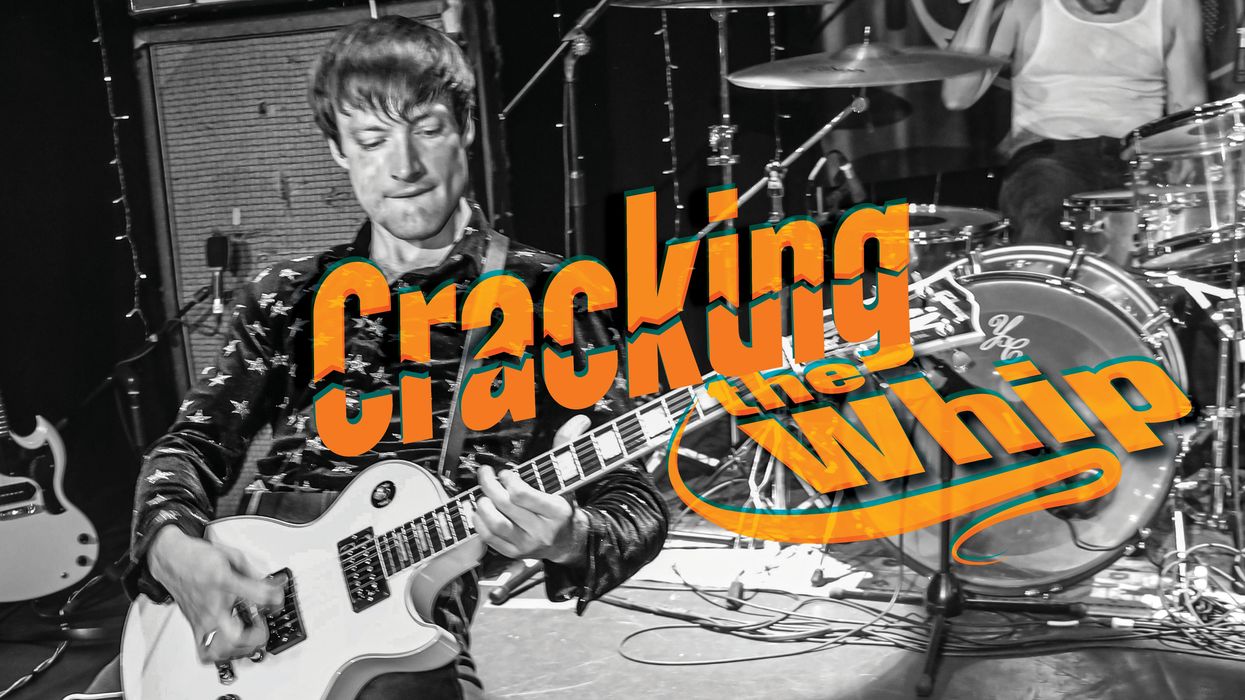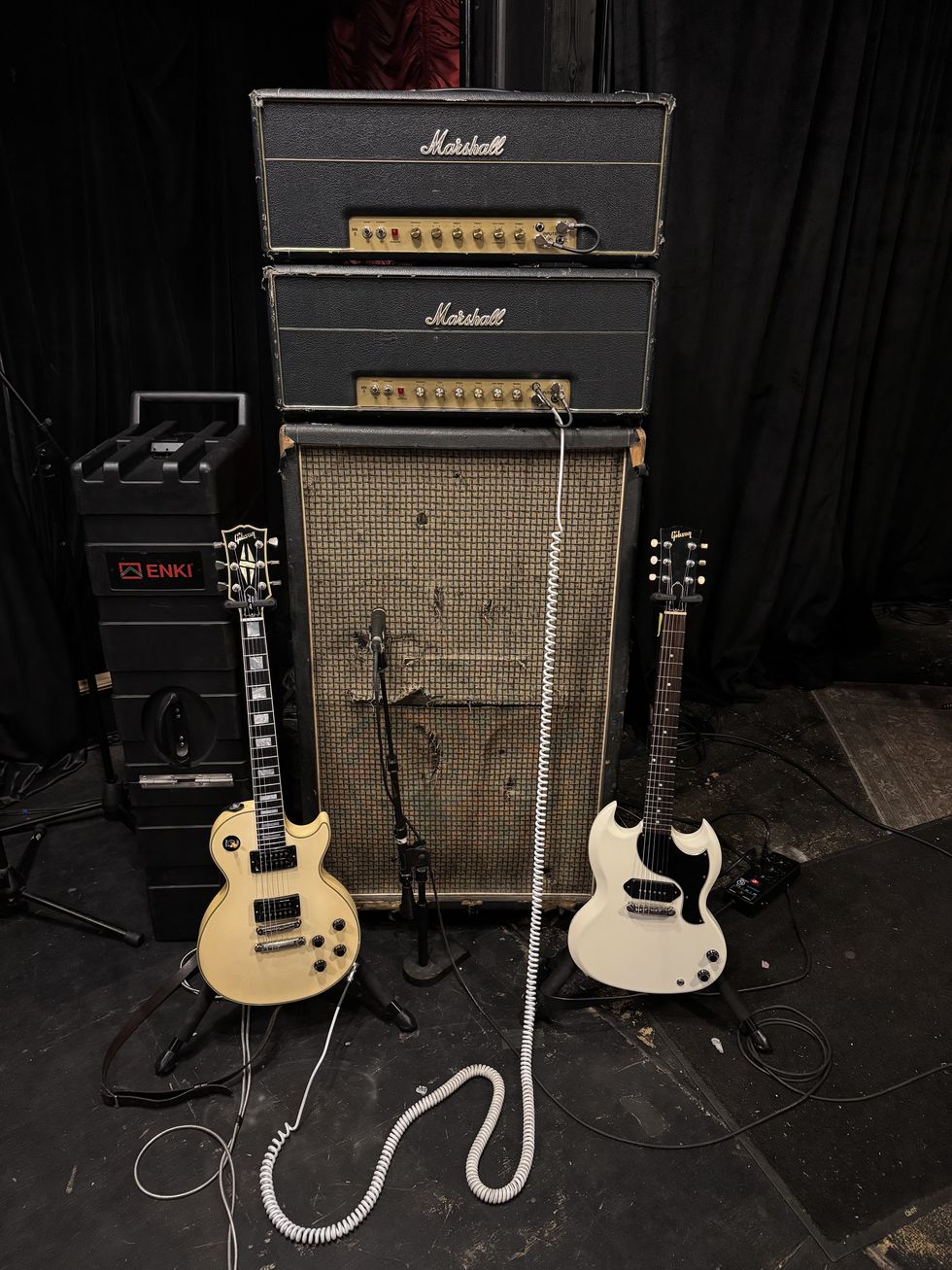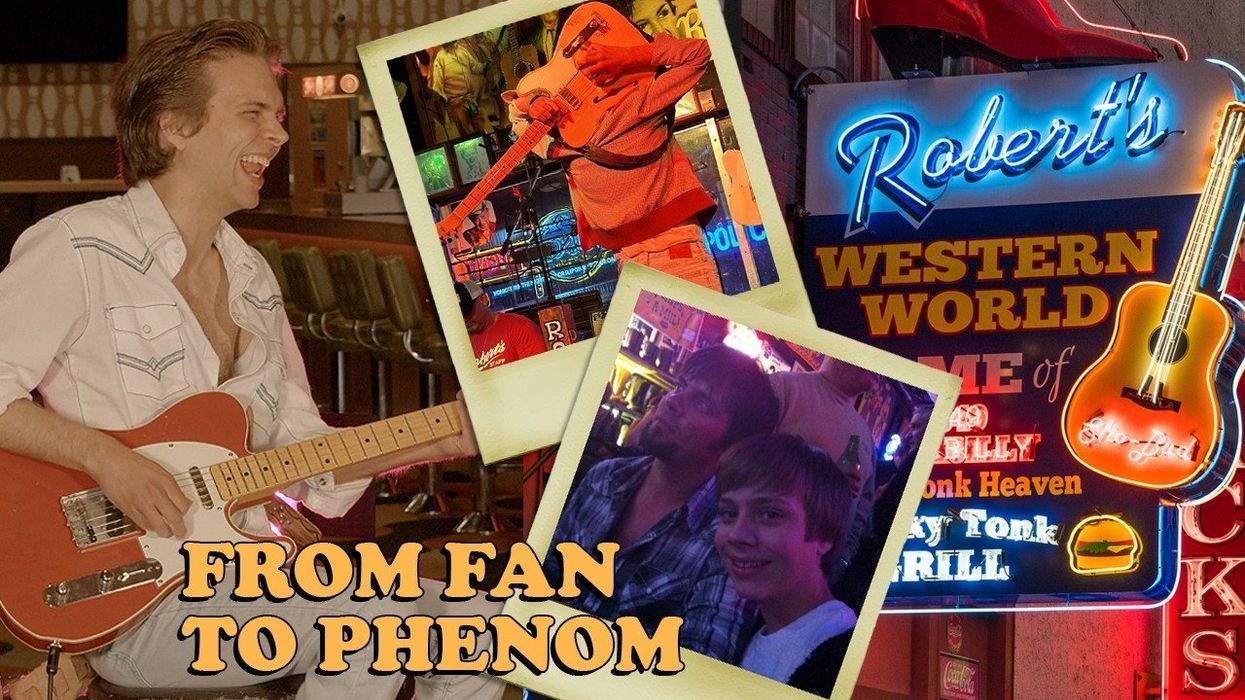“It’s like time travel,” says Brandon Seabrook, reflecting on the sonic whiplash of “Object of Unknown Function.” The piece, which opens the composer’s solo album of the same name, journeys jarringly from aggressive “early banjo stuff” up through “more 21st-century classical music,” combined with electronic found sounds from a TASCAM 4-track cassette recorder. The end result approaches the disorientation of musique concréte.
“The structure is kind of like hopping centuries or epochs,” he adds. “I [wanted] all these different worlds to collide. It’s like a choose-your-own-adventure.”
It’s a heady, thrilling idea—but no one who’s followed his zigzagging career will be surprised at the gumption. As he’s cycled through various projects (including the acclaimed power trio Seabrook Power Plant), he’s become a resident chaos architect within the Brooklyn avant-garde scene—exploring everything from jazz-fusion to brutal prog to other untamed strains of heavy rock, typically wielding his trusted 1928 tenor banjo and a modified “heavy metal Telecaster” acoustic-electric from 1989.
But Object of Unknown Function, his first solo album since 2014’s Sylphid Vitalizers, became his own real-life choose-your-own-adventure—a process of rejuvenation by playing with new toys. Along with his usual gear, Seabrook’s main compositional tools this time were a 6-string 1920 William O. Schmick Lyric guitar banjo and a 1998 Jerry Jones Neptune electric 12-string—both of which became vibrant “new relationships,” even if, at first, he felt like he was “stepping out on his guitar.”
“My other guitar [his Telecaster] is the only thing I’ve been playing for the past 25 to 27 years,” he says, laughing. “I was so afraid to try something else: ‘I can’t play another guitar because it’s like an extension of my arm. I know the topography of this neck so well. It’s my sound.’"
Brandon Seabrook's Gear

Seabrook’s 1989 Fender HMT Thinline Telecaster has seen enough wear to rival Willie Nelson’s Trigger.
Photo by Scott Friedlander
Instruments
- 1928 Bacon & Day Silver Bell tenor banjo
- 1920 William O. Schmick Lyric guitar banjo
- 1989 Fender HMT Thinline Telecaster with Sheptone Pickups
- 1998 Jerry Jones Neptune 12-string electric
Amps
- 1962 Magnatone Custom 450
- 1971 Traynor YGM-3
Pedals
- Arion SAD-1 Stereo Delay
- Jam Pedals Dyna-ssoR compressor
- Jam Pedals Rattler distortion
Strings and Picks
- D’Addario XL Nickel Wound 10's
- Dunlop Tortex .88 mm
Accessories
- TASCAM PORTA 3 4-track cassette recorder
But Seabrook fell in love “right away” with the Jerry Jones, and new ideas started flooding out. “The 12-string is such a magic sound, and the Jerry Jones holds the intonation so well that you can detune some of the double-strings to make different intervals, kind of like a built-in harmonizer,” he says. “When you play chords on that and they ring; it’s some sort of majestic, angelic sound—or it can be.” Photo by Scott Friedlander
Seabrook found the 6-string banjo at Brooklyn shop RetroFret Vintage Guitars, intending to shop for a mandolin. He was struck by William Schmick’s construction (“It uses slightly heavier strings, and the neck is wide”) and, more crucially, the surprising intensity it harnesses: “It just sounded so metal to me or something,” he recalls. “So deep and rich and ominous, but beautiful.” These discoveries came at a pivotal time: “I don’t know what happened last year, but I felt the need to get some new instruments. And that opened up a new sound world.”
He eventually linked up with two key collaborators, producer David Breskin (John Zorn, Bill Frisell) and engineer Ben Greenberg (who plays guitar in noise-rock band Uniform), at the small Brooklyn studio Circular Ruin. That setting was ideal for the physical experience he hoped to capture: “I used contact mics on the guitar, and [sometimes on my body], to have a subtle sound design. It’s in there—you can kinda hear it [on the album] sometimes.”
One reason for that impact: This is, by and large, the most intimate record of Seabrook’s career—a downshift from the wall-to-wall wildness that has defined so much of his work. That said, make no mistake. Almost no one else could create the pogoing guitar madness of “Perverted by Perseverance,” which sounds like ’80s King Crimson being subjected to water torture. (“I actually was revisiting the ’80s King Crimson stuff while I was making this album,” he says. “I just came back to it after years of not hearing it. That’s straight-up Telecaster prepared with some alligator clips, and then I use my radio tape recorder on the pickups.”)
Object sometimes leans into a more traditional “solo” vibe, like on the dissonant, highly improvised banjo piece “Unbalanced Love Portfolio”; at other points, it piles instruments into towering overdub soundscapes, like on “Gondola Freak,” a heart-accelerating swirl of harmonized 12-strings.
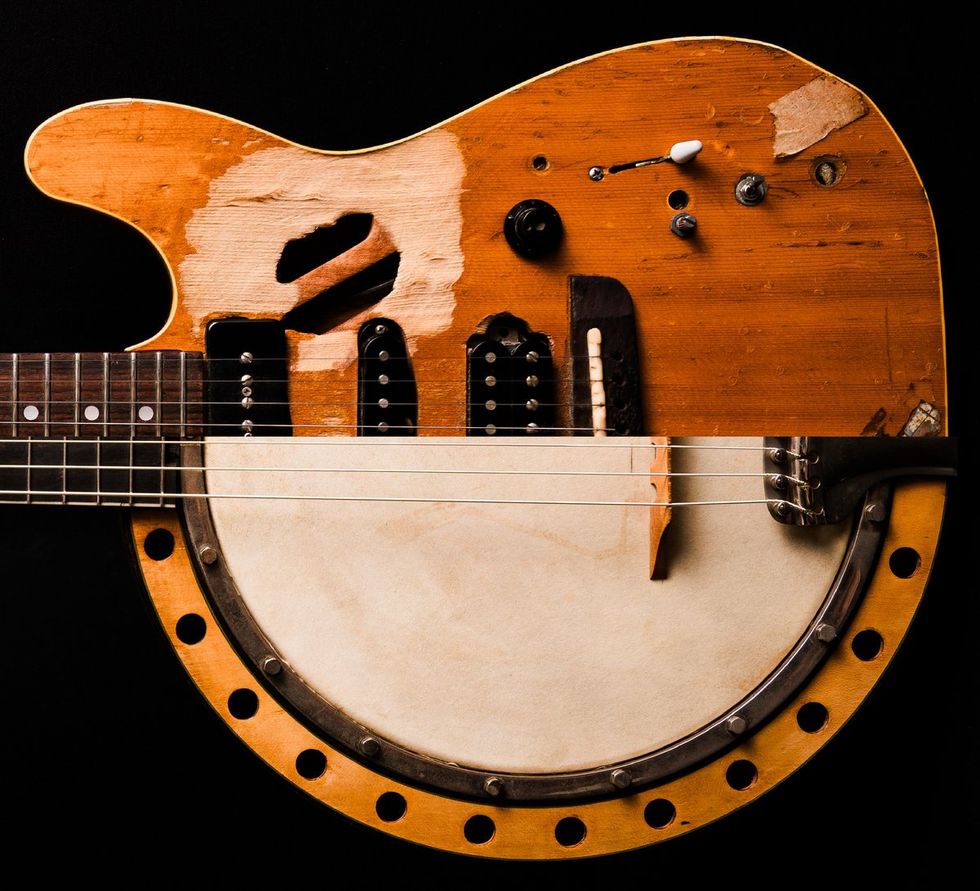
Object of Unknown Function is the guitarist’s first solo record since 2014’s Sylphid Vitalizers.
“I’ve been playing a lot of solo things over the past 10 years, and that’s on banjo and guitar,” Seabrook says. “I was kinda hesitant to make an album of that stuff, although some pieces are totally stripped-down to just me. But I thought I could make a more compelling studio listening experience now that I have a little more of a palette that these instruments are offering. The solo album I did 10 years ago had lots of layers, but I wanted to be a bit more vulnerable on this record and have some songs stripped-down and some full.”
The resulting project is a “blender” of all the things Seabrook loves, thrown together in a way that sparks his imagination. “I’m just trying to sound like the influences I have, whether it’s ’80s King Crimson or Eugene Chadbourne or Van Halen or Joni Mitchell—all these things I hear certain fragments of, and maybe it’s only for a measure or a section,” he says. “I guess I am conscious of messing with form. I love the juxtaposition of certain things.”
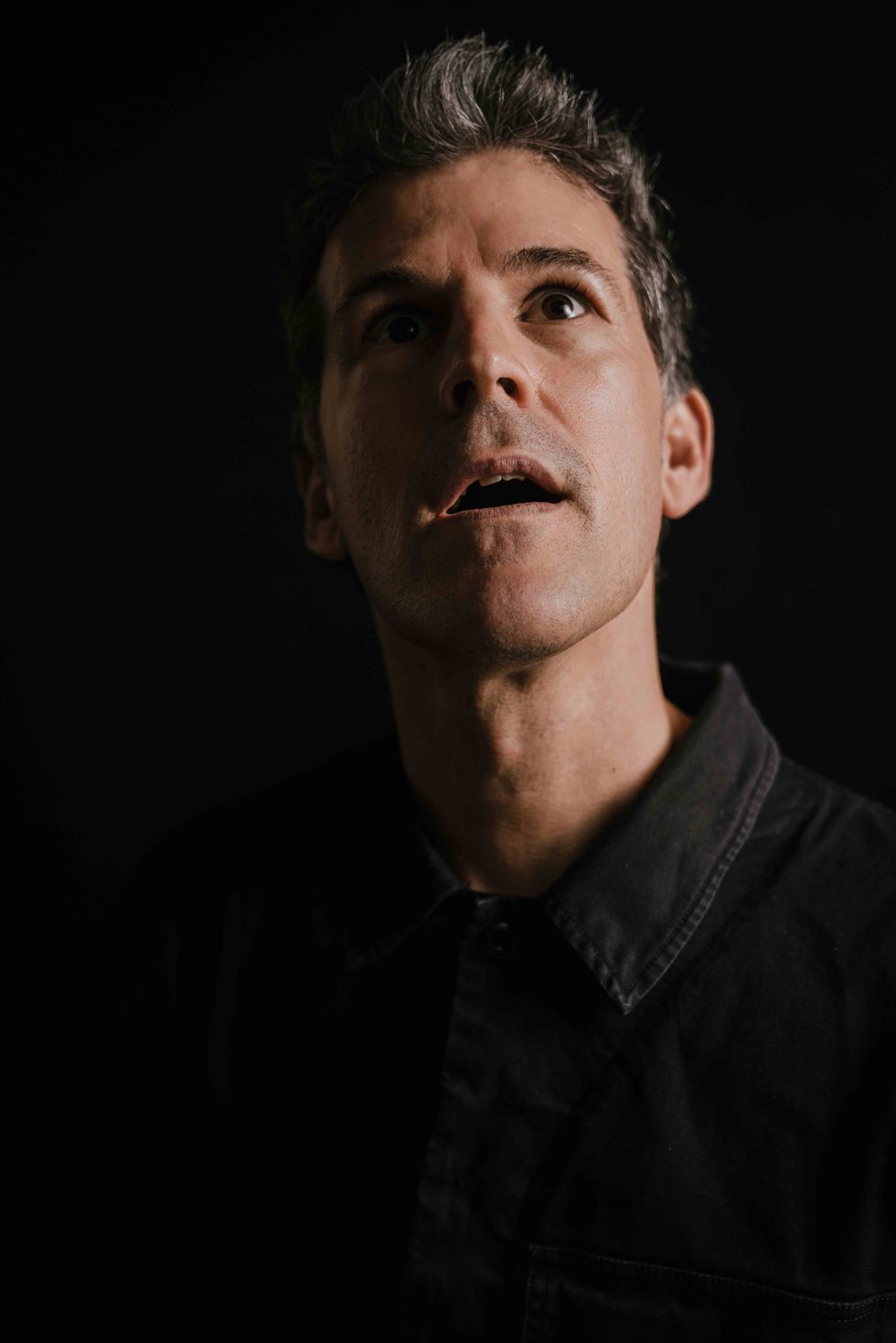
Seabrook is a long-time mainstay of the Brooklyn jazz and avant-garde scene, where, in addition to leading his own ensembles, he’s worked with a wide range of artists that includes Nels Cline, Anthony Braxton, Mike Watt, and Mostly Other People Do the Killing.
Photo by Luke Marantz
“I used to be even more of a hailstorm on the audience psyche,” he continues. “I just recorded a new album with this quartet of synthesizer, violin, bass, and guitar, and I want to bring more lyricism and less feeling of intentional surprise. I’m getting there slowly. A lot of the music I listen to is really lyrical, like folk music or soft rock. I try to put elements of that in here. I guess I do want to make weird twists and turns, but I do put a lot of thought into how to weave them and make them coherent.”
It’s not like Seabrook has suddenly recorded an Eagles album, but these more refined moments signal a desire to keep challenging himself—and his audience. “I think it’s getting older and being more vulnerable, more confident in your choices,” he says. “When I was younger, I never wanted one second of space. Now I just want to be more connected to the things I truly love. It’s a journey. I never want to think somebody wants to hear a certain thing from me.”
YouTube It
Video Caption: In this mind-melting performance of “brutalovechamp,” captured May 20th, 2023 at Brooklyn’s Public Records, Seabrook is joined by the epic proportions octet, including everything from cello to recorder.
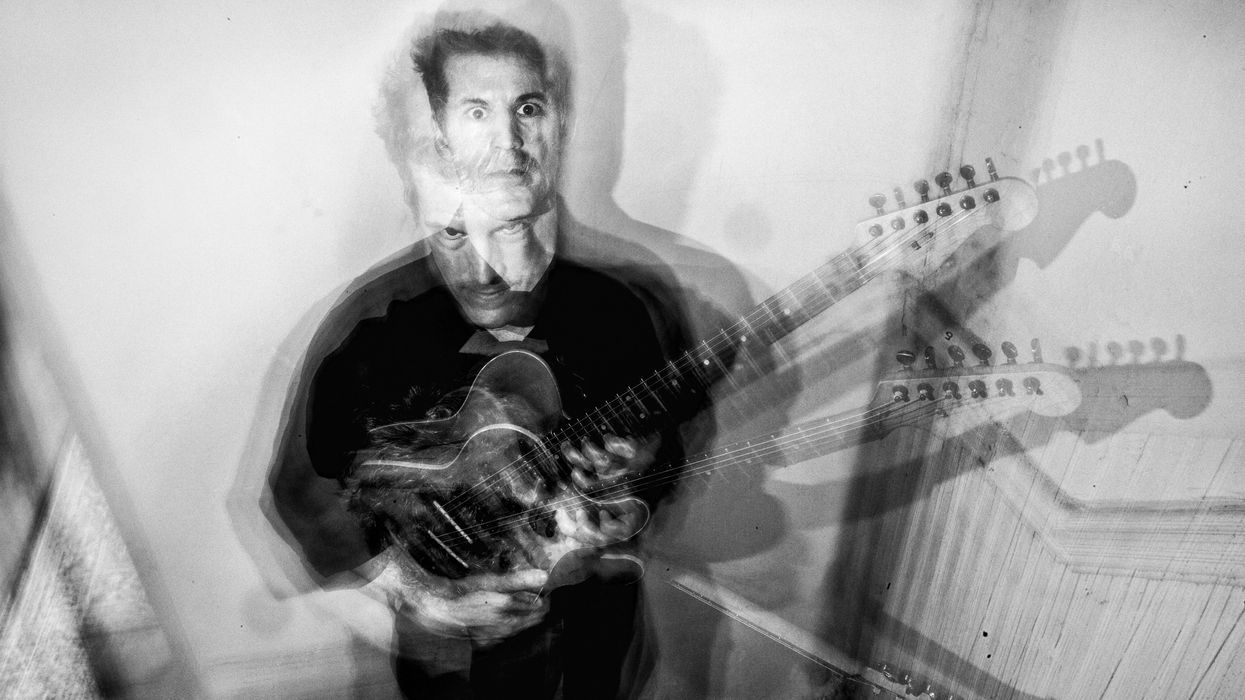
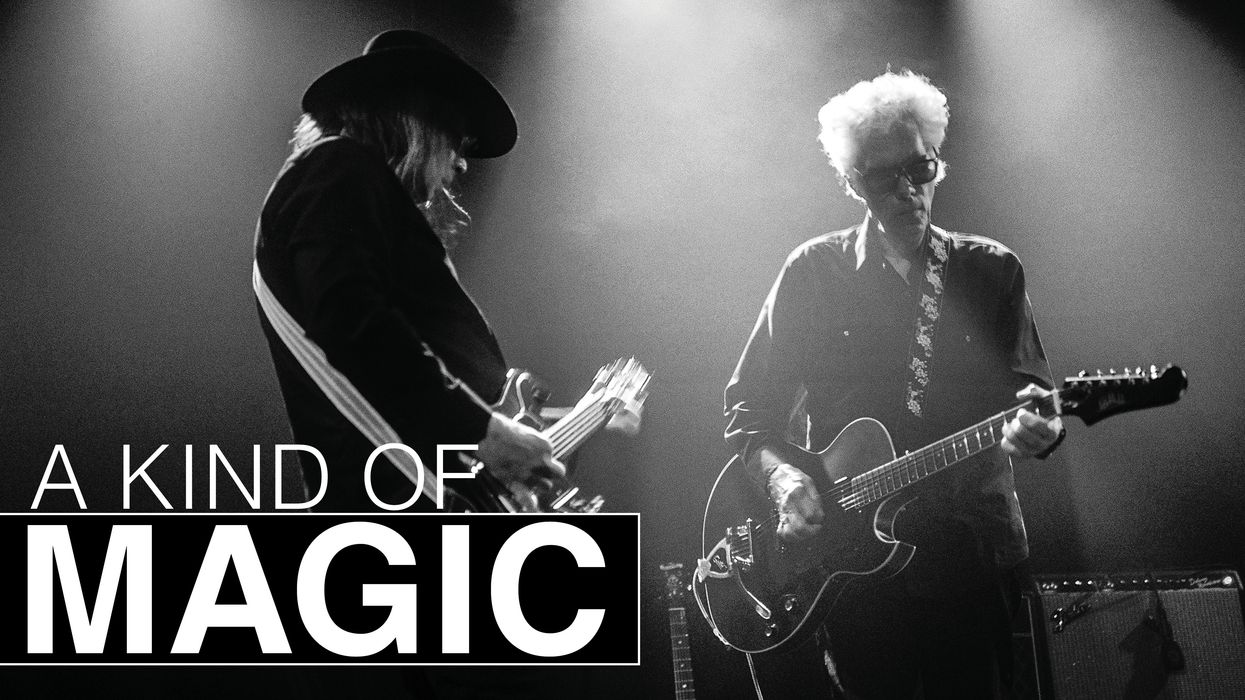
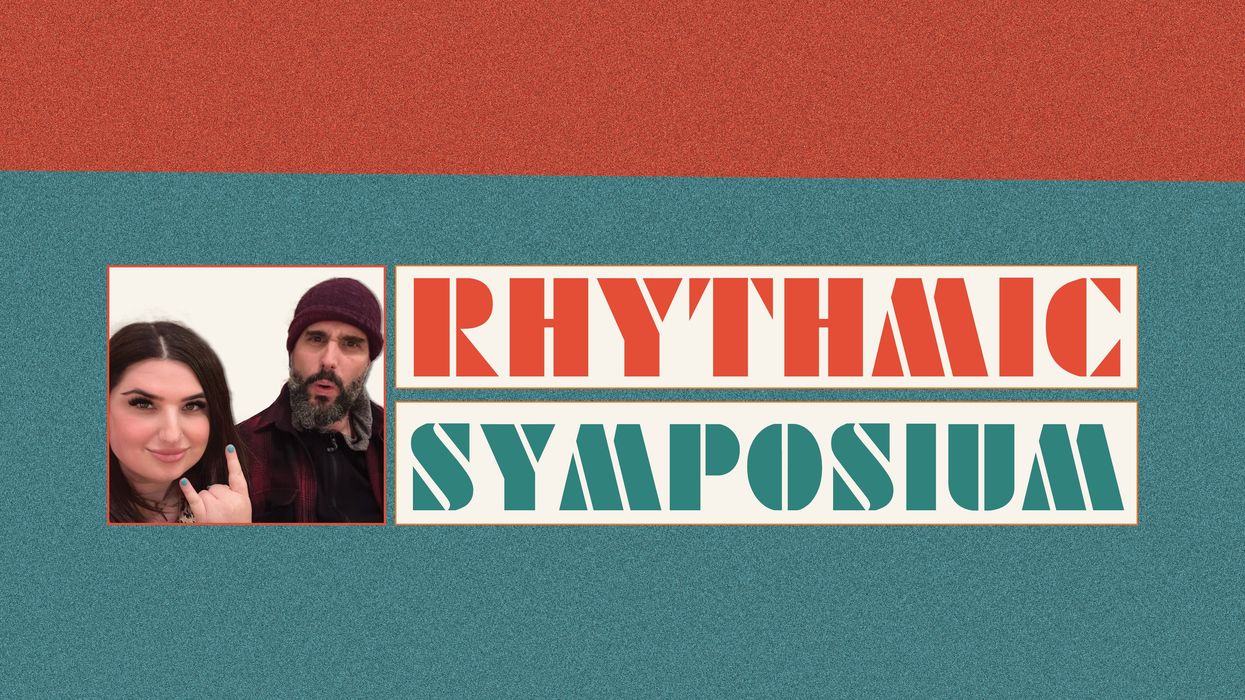
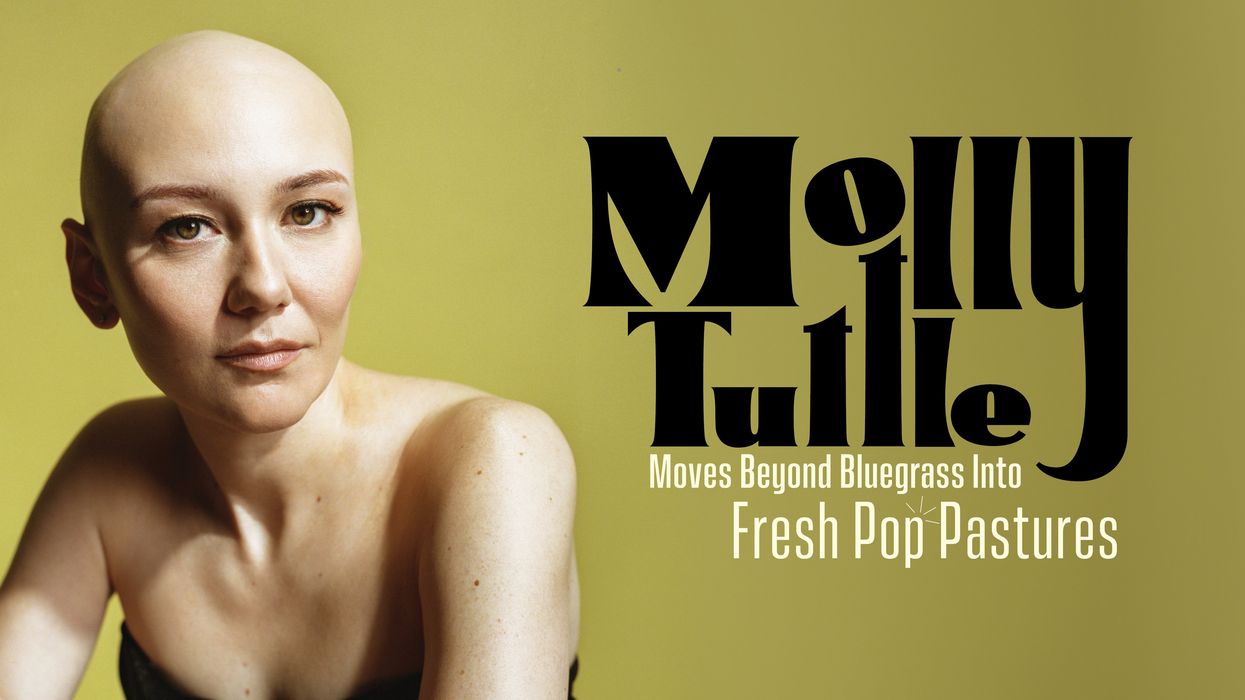











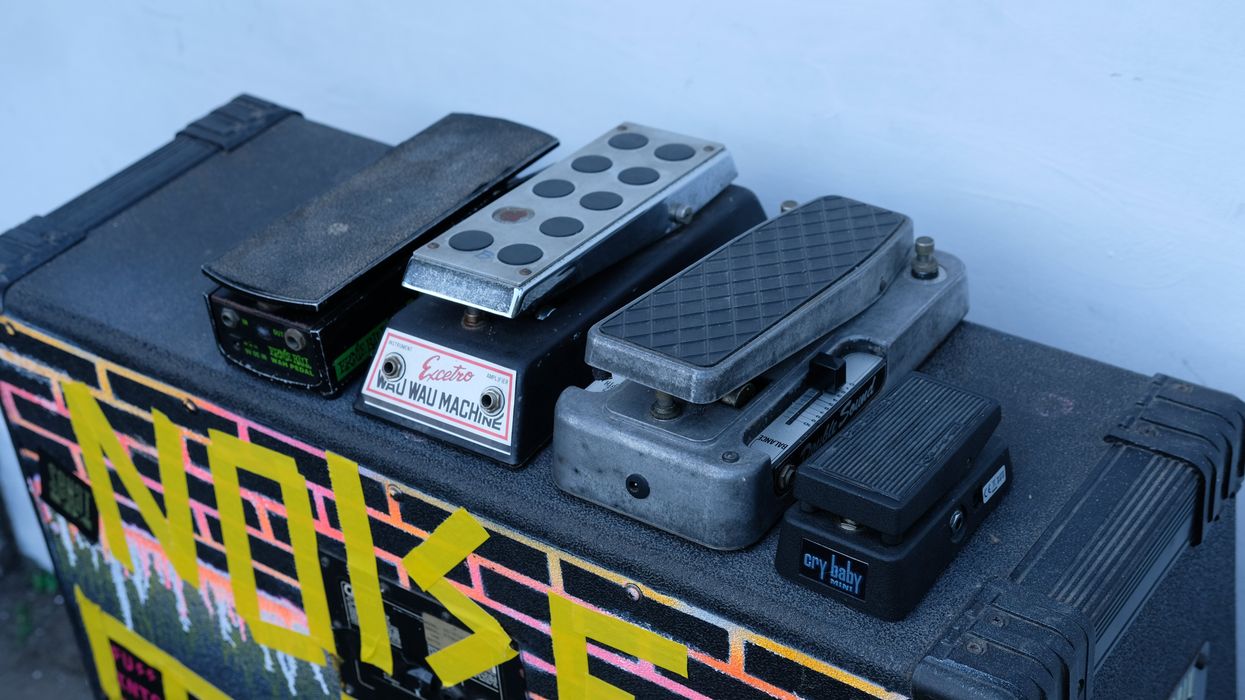

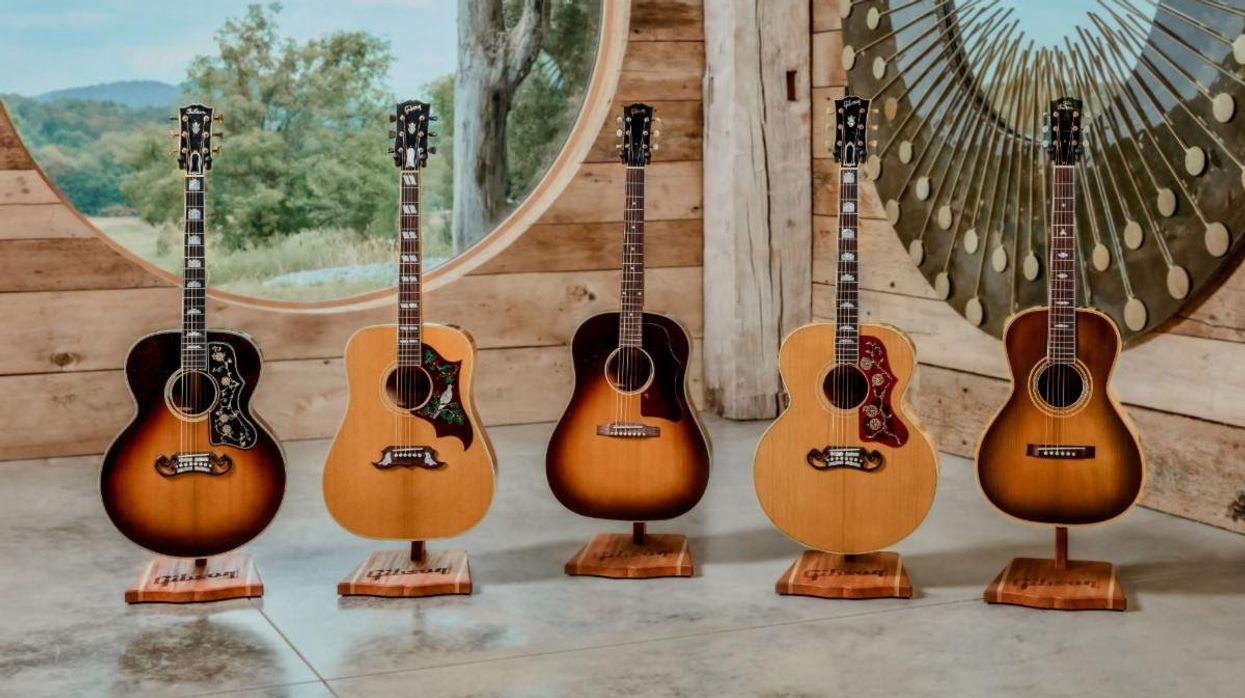




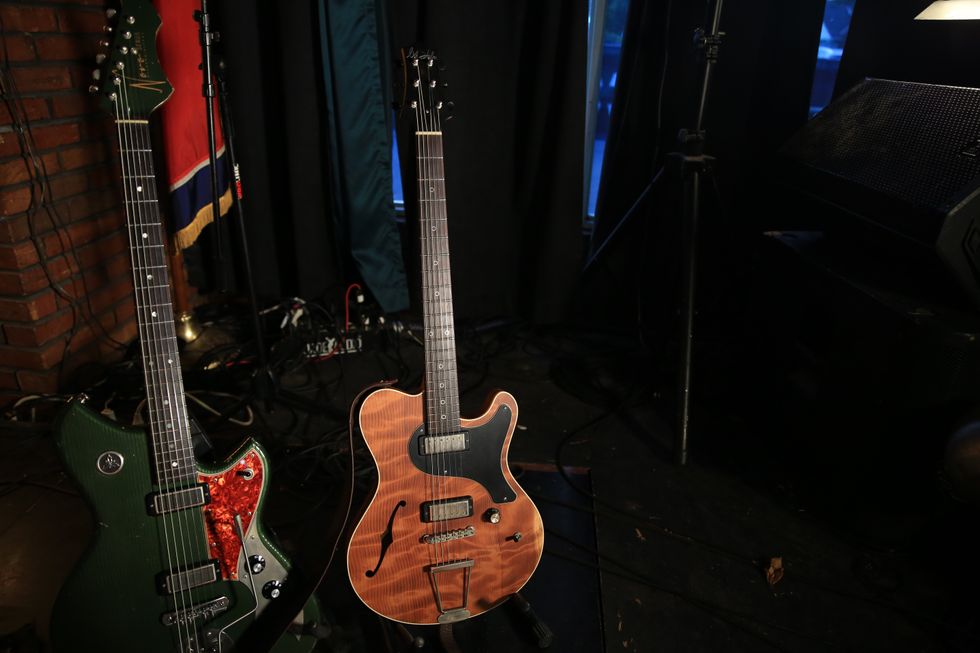
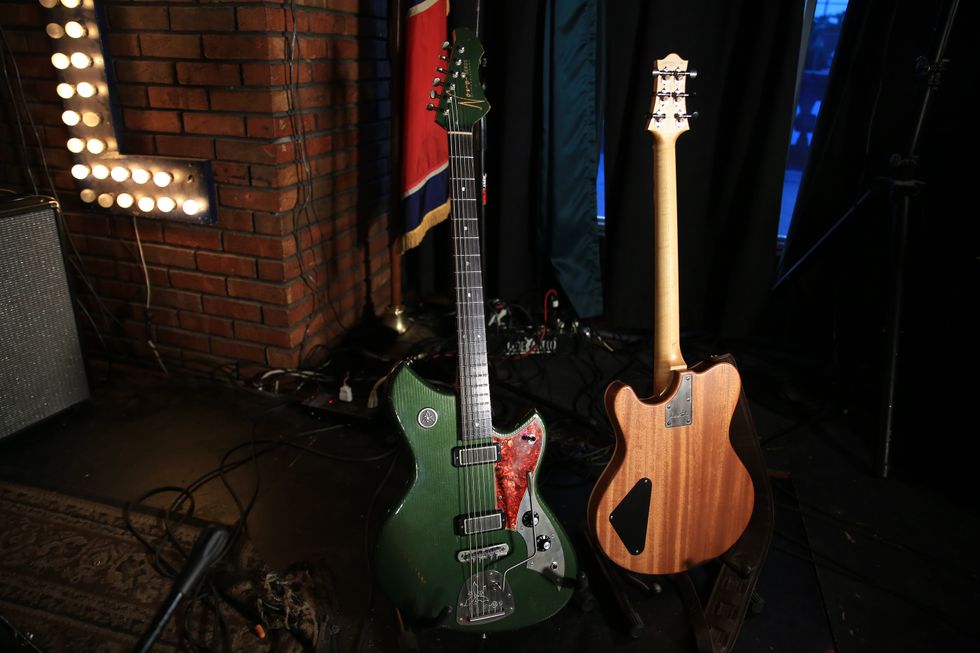
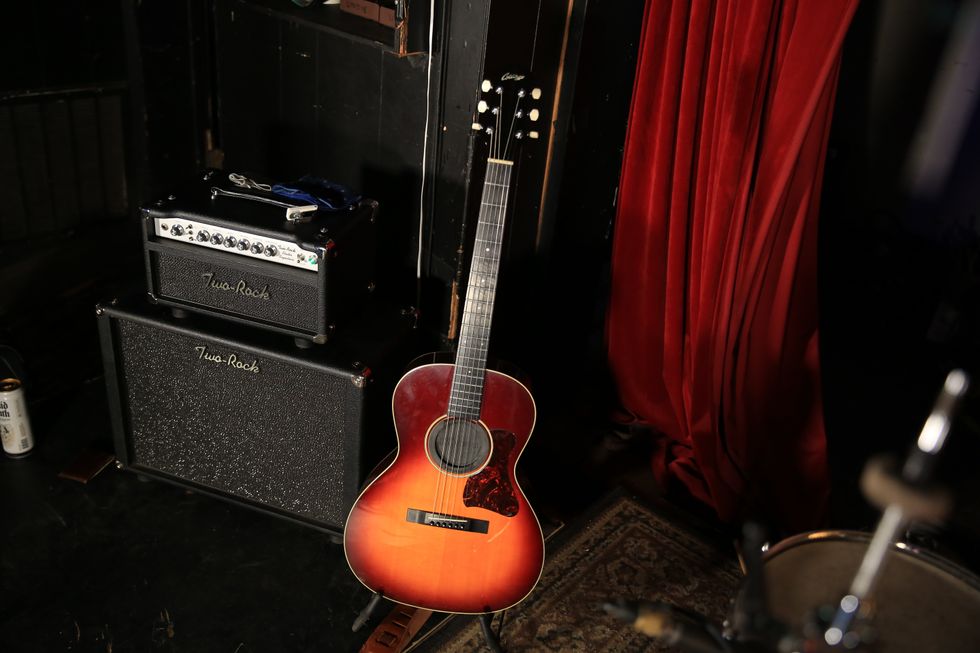
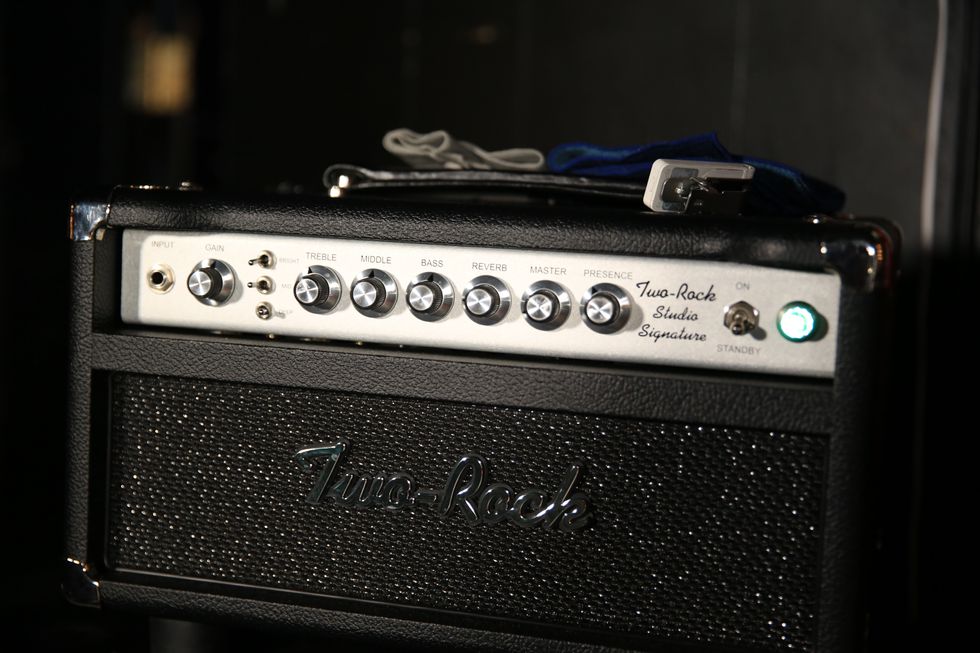
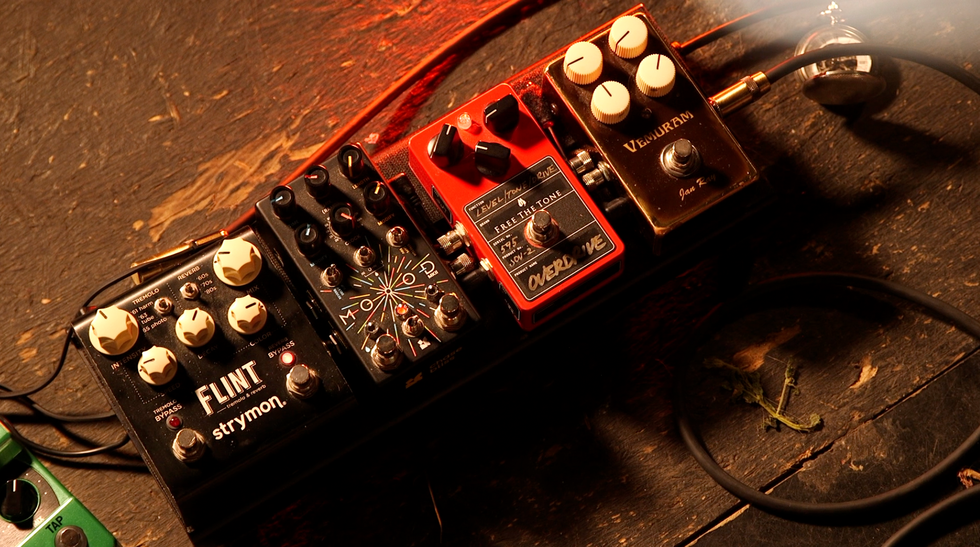
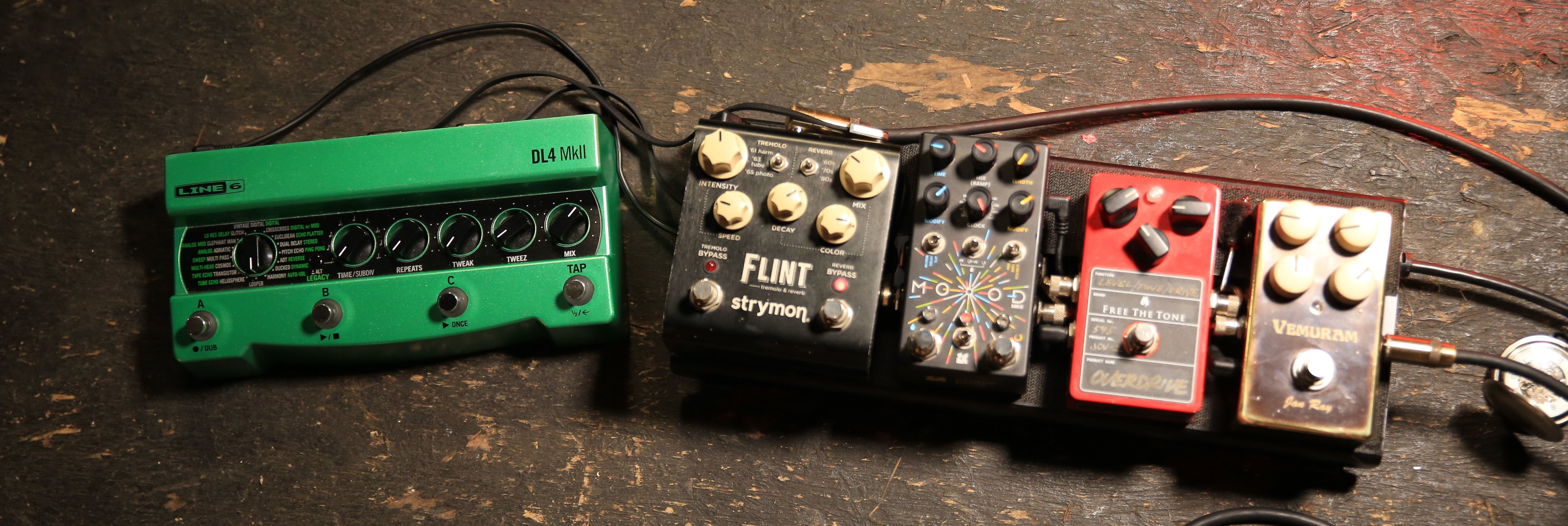 Miller’s Collings runs into a Grace Design ALiX preamp, which helps him fine-tune his EQ and level out pickups with varying output when he switches instruments. For reverb, sometimes he’ll tap the
Miller’s Collings runs into a Grace Design ALiX preamp, which helps him fine-tune his EQ and level out pickups with varying output when he switches instruments. For reverb, sometimes he’ll tap the 